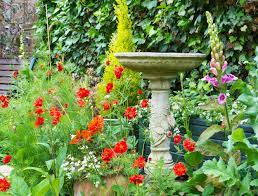Spring is the perfect time to start a garden, especially if you love flowers. Planting flower seeds is a fun and rewarding way to create a beautiful garden that will brighten your home and lift your spirits. However, it can be overwhelming if you’re new to gardening or haven’t planted flower seeds before. Here are some top tips on how to start your garden with spring flower seeds.
Choose the Right Flowers for Your Garden
The first step in starting a flower garden is to choose the right flowers. When planning your garden, take into account its size, the level of sunlight it receives, and your personal preferences. Some popular flowers for spring gardens include daffodils, tulips, hyacinths, and crocuses. You can also plant annuals such as marigolds, petunias, and snapdragons, which will bloom all summer.
Prepare Your Soil
Once you’ve chosen the flowers you want to grow, it’s time to prepare your soil. Clear the area of any weeds or debris and loosen the soil with a garden fork or tiller. Add compost or organic matter to enrich the soil and improve drainage. It’s also a good idea to test the pH of your soil to make sure it’s in the right range for the flowers you want to grow.
Plant Your Seeds at the Right Time
Timing is crucial for planting flower seeds. Most spring-flowering bulbs should be planted in the fall, but you can plant some seeds as soon as the ground thaws in the spring. You can start seeds indoors a few weeks before the last frost date in your area and then transplant them outside. Follow the instructions on the seed packet for specific planting times and depths.
Water and Fertilize Your Plants
Once you’ve planted your seeds, keeping them watered and fertilized is important. Water your plants regularly, especially during dry spells, and make sure the soil is moist but not waterlogged. For healthy growth and vibrant blossoms, it is recommended to apply a balanced fertilizer to your plants every few weeks.
Protect Your Plants from Pests and Diseases
Unfortunately, pests and diseases can wreak havoc on your flower garden. Keep an eye out for common garden pests such as aphids, slugs, and snails, and use natural methods such as companion planting or organic insecticides to control them. You can also prevent diseases by planting disease-resistant varieties and ensuring your plants have good air circulation.
Prune and Deadhead Your Flowers
As your flowers grow and bloom, it’s important to prune and deadhead them to keep them looking their best. Pruning involves removing dead or damaged branches or stems, while deadheading involves removing spent flowers to encourage new growth. Regular pruning and deadheading will promote healthy growth and more abundant blooms.
Consider Companion Planting
Companion planting involves planting certain plants together to help each other grow. For example, planting marigolds with your vegetables can repel pests and attract beneficial insects, while planting herbs such as basil and parsley with your flowers can repel pests and add fragrance to your garden. Research which plants work well together and experiment with combinations to create a thriving garden.
Starting a garden with spring flower seeds is a fun and rewarding way to create a beautiful garden that will brighten your home and lift your spirits. By choosing the right flowers, preparing your soil, planting at the right time, watering and fertilizing your plants, protecting them from pests and diseases, and pruning and deadheading your flowers, you can enjoy a stunning flower garden all season long. With a bit of time and effort, you can create a garden full of blooming beauties that will bring you joy for years.







